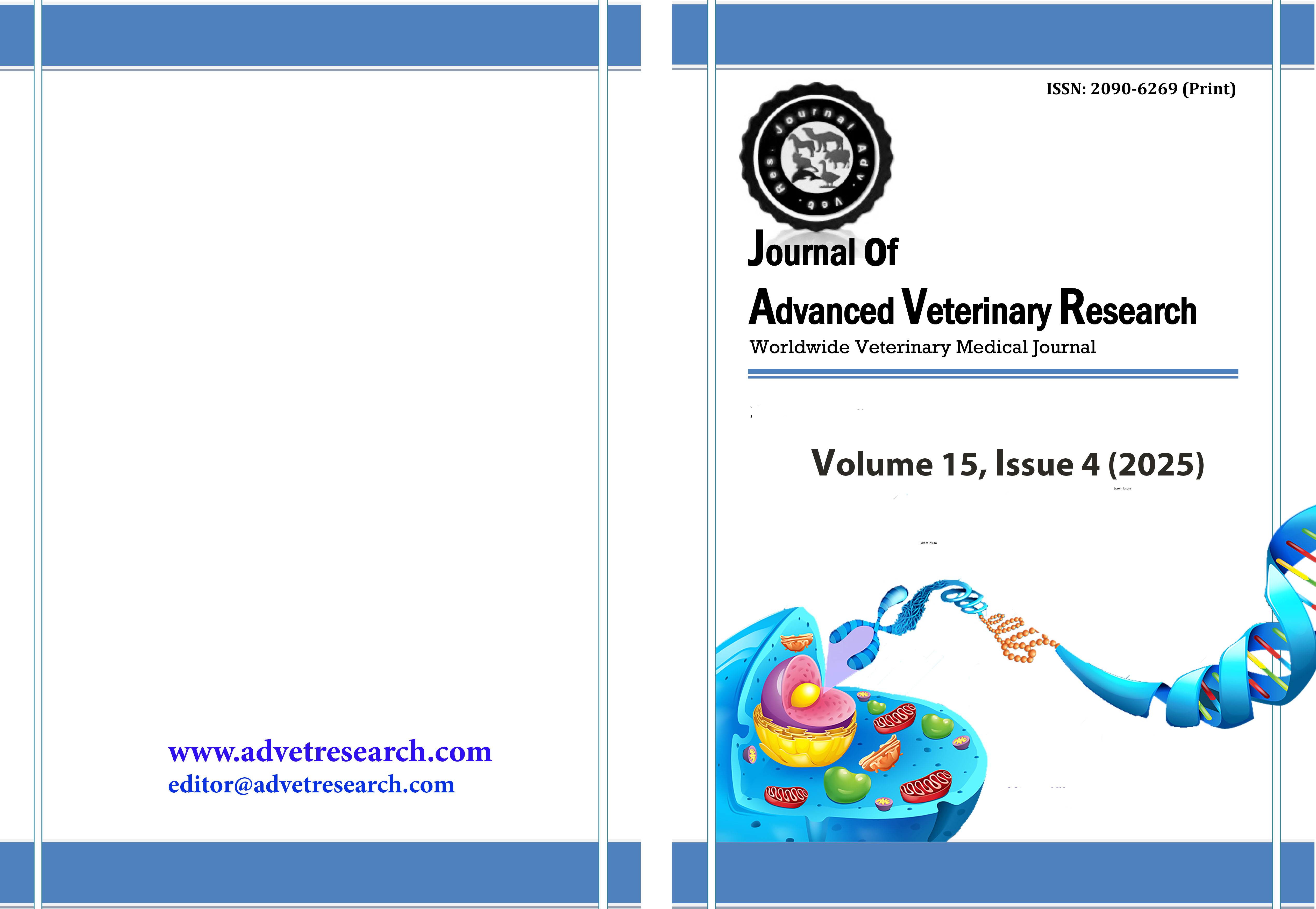Effect of Ruellia tuberosa L. leaf extract on germinal epithelium thickness and seminiferous tubule diameter in the testes of alloxan-induced white rats
Keywords:
Alloxan, Diabetes, R. tuberosa Leaves Extract, Germinal Epithelium ThicknessAbstract
Diabetes Mellitus (DM) is a pathological condition that leads to metabolic disturbances, affecting the health of both human and animals. R. tuberosa leaf extract, which contains antioxidants such as saponins, carotenoids, flavonoids, and phenols, has the potential to neutralize free radicals and reduce oxidative stress, thereby mitigating testicular tissue damage. This study aimed to evaluate the effect of R. tuberosa leaf extract on germinal epithelium thickness and seminiferous tubule diameter in the testes of alloxan-induced white rats. This experimental study used a Completely Randomized Design (CRD) with white rats as the animal models. The treatment groups included P0 (normal control), K- (diabetic control), K+ (50 mg/kg BW of metformin), P1 (200 mg/kg BW of R. tuberosa leaf extract), P2 (400 mg/kg BW of R. tuberosa leaf extract). Testicular organ samples were collected on day 14. Histopathological samples were stained with Hematoxylin-Eosin and examined under a trinocular microscope at 100X magnification. Data on germinal epithelium thickness and seminiferous tubule diameter were analyzed using ANOVA, followed by Duncan’s test. The group receiving R. tuberosa leaf extract (200 mg/kg BW) exhibited the highest mean germinal epithelium thickness, while the diabetic control group showed the lowest value. Similarly, the group treated with R. tuberosa leaf extract (400 mg/kg BW) showed the highest seminiferous tubule diameter, and the lowest was the diabetic control group. The study indicated that the administration of R. tuberosa leaf extract at doses of 200 mg/kg BW and 400 mg/kg BW significantly improved germinal epithelium thickness and seminiferous tubule diameter compared to the 50 mg/kg BW dose of metformin treatment.
Downloads
Published
How to Cite
Issue
Section
License
Copyright (c) 2025 Journal of Advanced Veterinary Research

This work is licensed under a Creative Commons Attribution-NonCommercial-NoDerivatives 4.0 International License.
Users have the right to read, download, copy, distribute, print, search, or link to the full texts of articles under the following conditions: Creative Commons Attribution-NonCommercial-NoDerivatives 4.0 International (CC BY-NC-ND 4.0).
Attribution-NonCommercial-NoDerivs
CC BY-NC-ND
This work is licensed under a Creative Commons Attribution-NonCommercial-NoDerivatives 4.0 International (CC BY-NC-ND 4.0) license




